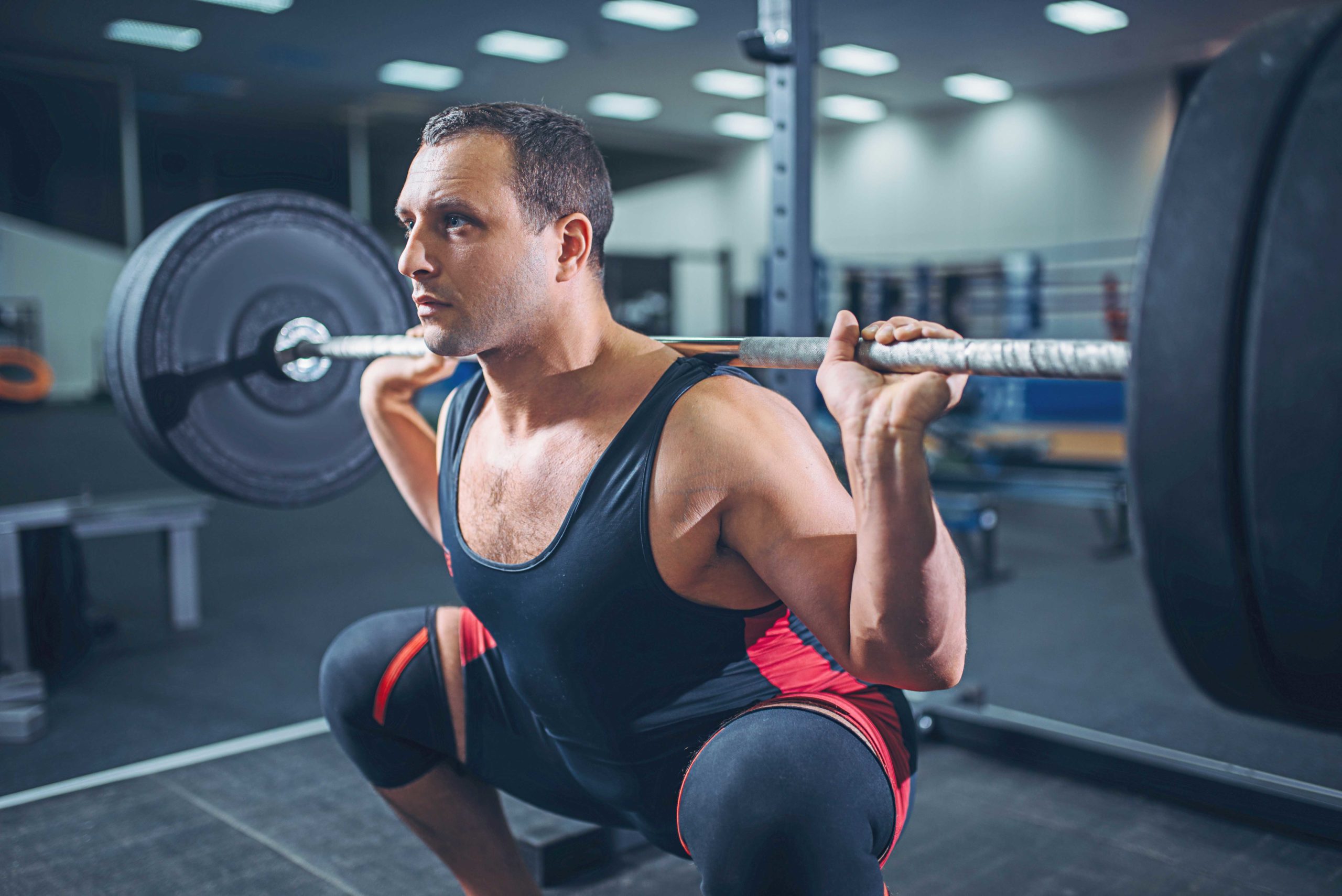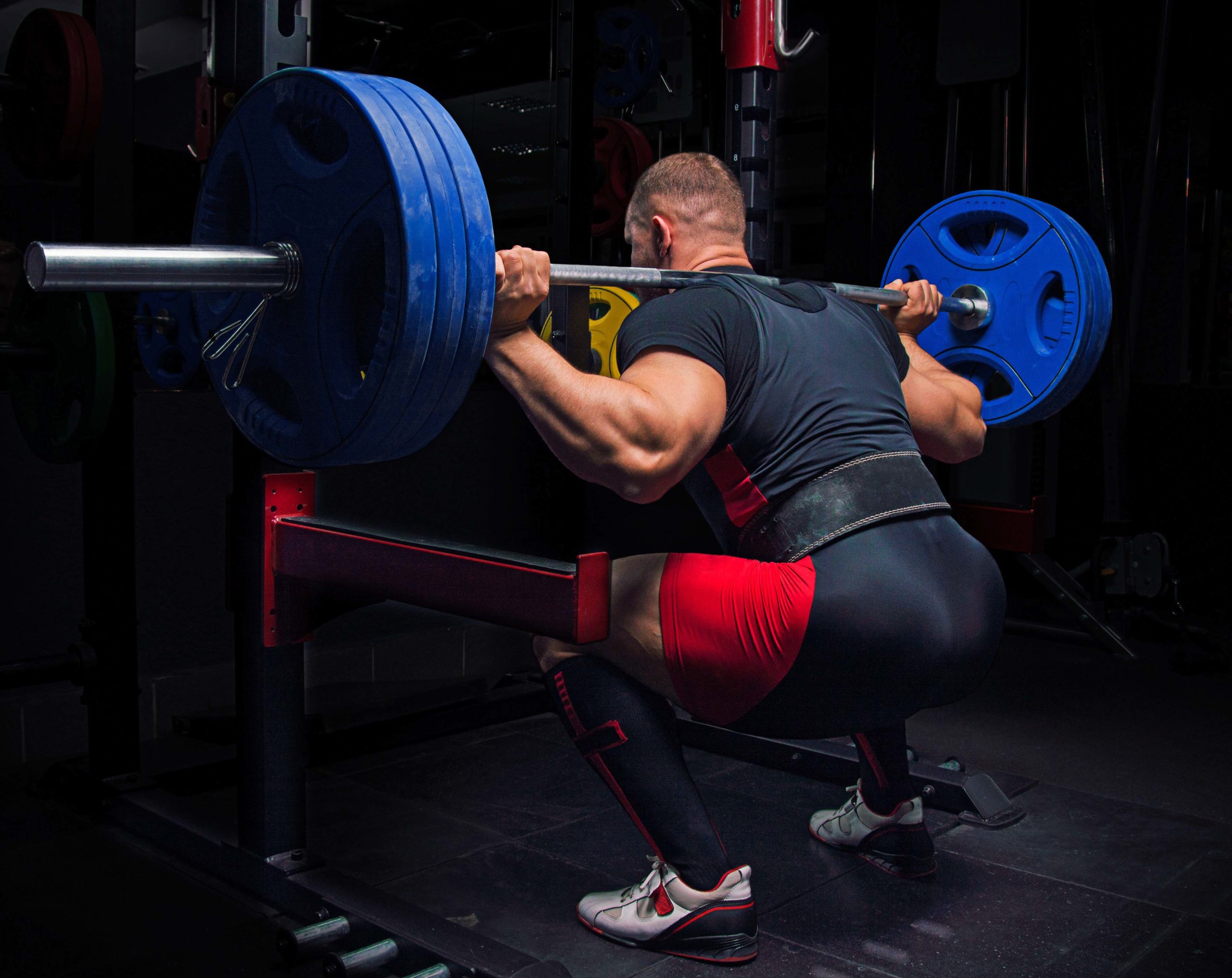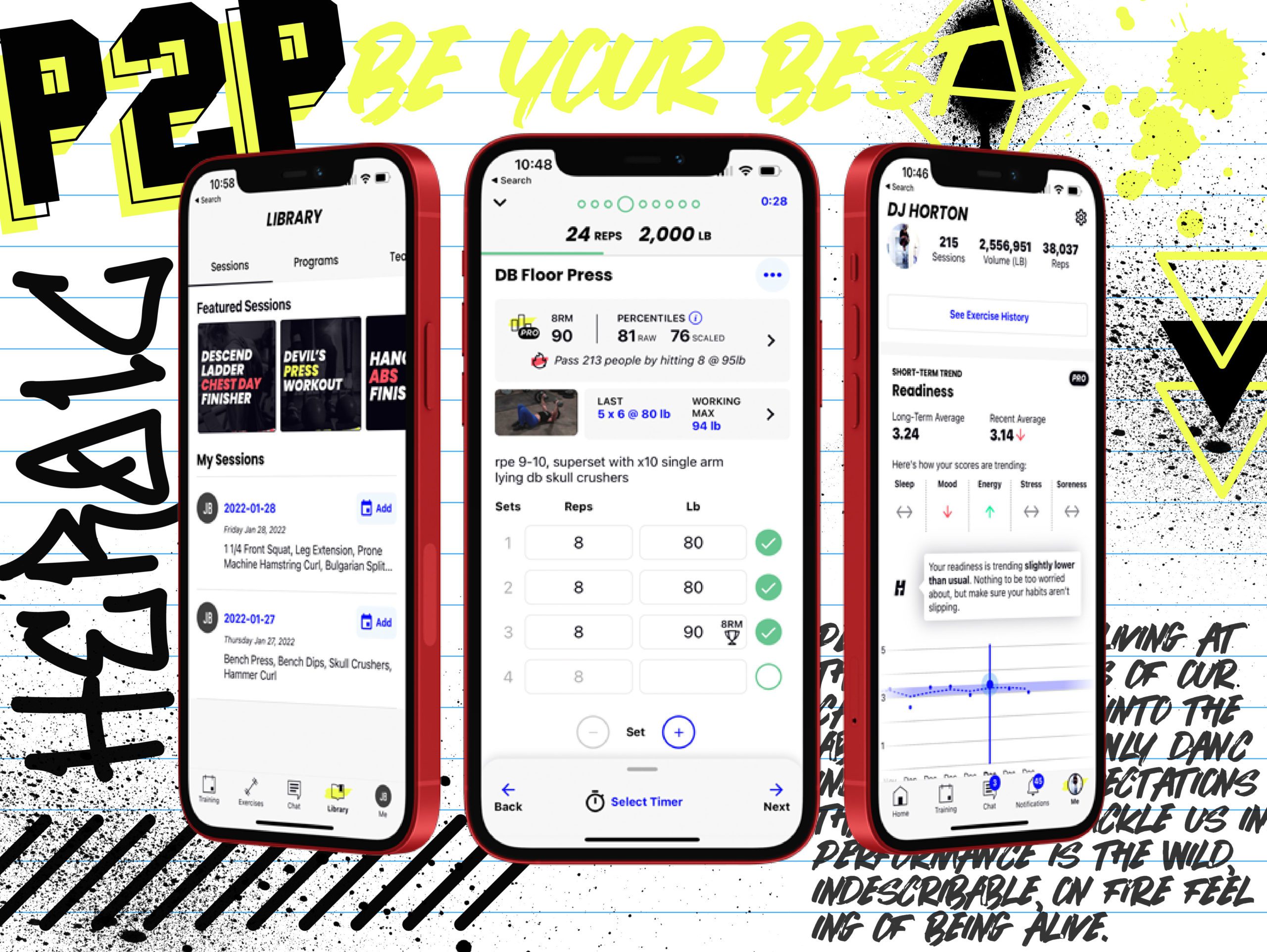Make Bigger Squat Gains With the Right Accessories

It’s not an unreachable goal to have solid squat numbers—we all want ‘em. So what weak points in your squat could you be drilling to set your next PR? Chris Van Nostrand is an S&C coach, competitive powerlifter, dad, and the founder of Strength Wise Barbell. His programs emphasize performance nutrition and using the latest scientific research to build effective workouts.
In this blog, he outlines a number of squatting assistance movements and variations to help with the most common movement faults like falling forward, knees caving in, hips shifting, and poor quad development. Expect to learn what face pulls and ankle mobility have to do with your squatting technique, high bar vs. low bar back squats, Platz squats, tempo, pause, and pin squats.

Cash In On the Best Squat Variations For Your Goals
The squat is the king of the barbell lifts. Sure, bench press gets the glory and deadlift gets the big numbers, but the squat requires unique physical and mental prowess. Choosing to load max weight onto your back while maintaining your composure in the hole is a special skill unto itself.
But making long-term progress, particularly as an intermediate lifter, takes more than just grit. At a certain point, you’ll need to learn the nuances of the key squat variations and some assistance movements. It also pays to learn how to program them strategically to break through plateaus, fix movement faults, and grow lagging muscles.
Anatomy Refresher: Low Bar vs. High Bar Back Squat
Since big gains are our goal, in this article I’m talking about the low-bar back squat. This is typically the version that allows you to lift the most weight. It relies slightly more on the larger glute and hip muscles than the high-bar squat, which is more quad heavy.
Note that the difference is fairly subtle, as both versions still primarily recruit your quads. The placement of the low-bar directly over the hips and glutes just means you can use those larger muscles more directly to produce power out of the hole.
If you watch some of the best lifters in the world squat, you’ll notice that force production from the quads, hips, and glutes is only part of the story. They also display tremendous control. Record-breakers like John Haack, Ray Williams, and Russel Orhii are staying fairly upright and consistent with each rep by coordinating across a range of muscle groups.
Their adductors—the inner thigh muscles—are ensuring their knees track over their toes for the entire movement. The bar path remains perfectly vertical over the mid-foot thanks to powerful stabilizers in the spine and abdominals that keep them upright, while the trapezius and rhomboids lock the bar into place.
Long-term squat gains require you to strengthen these muscle groups while also perfecting the coordination and timing amongst them. This is where variations and assistance movements come in.
For an awesome breakdown of the standard squat points of performance, see this article: The Perfect Air Squat—Great Squat Mechanics For Life
Back Squat Variations & Assistance Lifts
Keep in mind the terminology here: variations and assistance. Just one or two of these per training cycle with lighter weights at moderate effort should be sufficient to support your squat gains. Save the PR attempts for your core lifts.
Many more variations exist of course, but these are the core movements that an intermediate lifter can use to drive excellent progress. Spend a little time diagnosing your movement faults, choose the ones that best fit, then track your data for at least one training cycle.
Once you have an idea of what assistance lifts are the most effective, start incorporating those into your program and get ready to crush your goals.
Goblet Squats or Front Squats
- Ideal For: Countering chest fall, avoiding spinal loading
- Why: Goblet squats and front squats both require you to hold a weight in front of you, which forces a more upright position. As one of the more common technical squat faults among lifters, tipping forward can result from a simple lack of body awareness or favoring the hips. In the descent, lifters will keep the knees locked for a split second while lowering the bar with the hips. In the ascent, the reverse occurs: lifters bail on their quads in favor of the hips. In either case, the exaggerated hip movement allows the torso to lean forward. If you have back pain or spin injuries, these variations allow you to squat without adding pressure to your spine.
- Programming: Add to your main squat day as a secondary movement or as part of your technique session—3 sets of 12-15 perfect reps at RPE 7.
- Scaling: Use the arms-out zombie squat method if you’re really struggling to stay upright
High-Bar Squats or Platz Squats
- Ideal For: Squat-specific quad development
- Why: Tom Platz popularized a narrow-stance toe-squat (now called “the Platz squat”) to grow insanely massive quads. A lack of quad development can pose a number of issues for novice lifters, like exacerbating chest fall and losing some explosion out of hole. Weaker quads also result in lifters coming forward onto their toes, which breaks the entire kinetic chain. Keep these variations as a core part of your training if you’ve spent months or years building your glutes and hips. Focusing on your quads with a variation specific to the low-bar squat will increase the strength carryover.
- Programming: Use as assistance movements on your main squat day—light sets in the 8-15 rep range at RPE 6-6.5.
- Scaling: Hold dumbbells or kettlebells to get deep into you adductors and build confidence with the bottom position.
You Work too Hard to Not See Progress
Find Your Perfect Training Plan
Options for Every Goal
Training plans from real coaches covering any goal, fitness level, and number of sessions per week.
The Best Coaches
Get coached by the best. Olympians, ex-NFL stars, Titan Games Winners, Sport Scientists and more.
Starting at $1/ day
With many options including a free 7 day trial, you can try out programming before you commit.
Tempo Squats
- Ideal For: Diagnosing movement faults, practicing control, and knee valgus
- Why: Tempo squats are excellent for identifying technical breakdowns by using slow motion to gather feedback from your body. They’re performed using a controlled count, at least 3 seconds on the way down and 3 seconds on the way up with a 1 second pause at the bottom. Focus on control and coordination: let your hips and knees rise simultaneously, allow your knees to glide over your toes, keep your knees forced out for the whole movement. Knee valgus, or the knees caving inward, usually happens on the ascent when your focus shifts toward pushing the weight back up. Slowing down the lift at light weights gives you a better feel for what should be happening and the ability to replicate under heavier loads.
- Programming: Since these benefit from mental focus, they’re best on a dedicated technique or assistance day—3 sets of 8 reps at RPE 6.
- Scaling: Alter the tempo based on where you experience the most issues and don’t cheat the time!
Pause Squats
- Ideal For: Maintaining tightness in the hole, technique on the ascent
- Why: Power out of the hole is key to squatting, but it needs to be controlled. The pause squat eliminates the stretch reflex or rebound (bounce), meaning that you’ll need to compensate by maintaining extra tightness. The pause squat can also be used to more actively feel the bottom position and intentionally drive through your feet. By pausing at the bottom of the squat, you’re also more able to coordinate your knees and hips rising at the same time.
- Programming: These are best on a dedicated technique or assistance day, with a scheme of 3 sets for 8 reps at RPE 6.
- Scaling: Use high-bar squats with pauses to gain more practice with driving your quads up from the bottom position.
Pin Squats
- Ideal For: Specific sticking points, hip shift
- Why: Pin squats have two excellent benefits—reducing hip shift by placing the barbell evenly on the safety pins and maintaining tension at the point where your lift commonly fails. While all the options listed here require significant concentration, pin squats make it absolutely necessary to pay attention. Feel the part of your ascent where your hips shift sideways or you hit a sticking point, then adjust your safety pins to about one inch below. Make sure to carefully place the bar on the pins, come to a full stop, and re-set before the next rep.
- Programming: Work these in on a dedicated technique or assistance day. Unlike the other variations, aim for the 5-rep range.
- Scaling: Use partial reps to maximize the benefit of the lift within your specific problem range or experiment with Anderson squats.

Level Up Your Training
With TrainHeroic’s immersive training app
TrainHeroic does everything you wish your old gym notebook could do.
Take the guesswork out of training with built-in exercise instruction and basic training programs. Compete against yourself and others. Track your performance and readiness. Smash your goals.

Face Pulls
- Ideal For: Countering chest fall
- Why: This is a bit of an outlier, but it’s easy to incorporate as an accessory and generates very little fatigue while strengthening your upper back. One contributing factor to this movement fault is the bar pushing your torso forward. This can happen with under-engaged trapezius and rhomboids in the upper back (these are often overlooked in favor of the lats and deltoids in a typical lifting program). We get plenty of heavy pushing and pulling, but your smaller posterior thoracic muscles increase your overall spine rigidity. Focus on developing a feel for these muscles by keeping your arms and delts relaxed. This is important practice for intentionally tightening them during the setup and preparation phases of the squat. More on face pulls here.
- Programming: 3-5 sets per week in the 20-rep range.
Ankle Mobility Drills
- Ideal For: achieving depth, better quad recruitment
- Why: Not quite a squat variation or assistance movement, but if ankle mobility is a limiting factor (looking at you, former basketball players), a small time investment can make noticeable differences in your squat depth and quad usage. The Squat University video above covers some quality exercises.
- Programming: Work some ankle mobility drills into your pre-squat warmups.
Want Training Tips, Exercise Guides & Knowledge Bombs Sent to Your Inbox?
Sign up for the FitNerd newsletter from TrainHeroic
Related articles
3 Ways to Improve Mobility Without Stretching
Are you still trying the endless foam rolling and stretching exercises to get that deep squat position? We know how important mobility is for great, or even GOOD performance. All professional athletes have some comfortability in end ranges of motion. So, what else do...
The Ultimate Guide to Lunges: Queen of all Glute Exercises
Your glutes are the largest muscle group in your body. They’re responsible for almost everything your legs do—walking, running, jumping, squatting, lunging, and just standing upright. As far as moving through space goes, strong glutes are the bedrock of overall...
A Beginner’s Guide to Steel Mace Training
Author: Jesse Grund
Mace training will make you a better mover without it’s not confining you to a fixed space or predetermined range of motion. Second, it’s an offset load with 80 to 90 percent of the weight in the head. You’re also constantly having to resist rotation, which creates greater core engagement.

Join the community
Sign up for the latest training news and updates from TrainHeroic

About TrainHeroic
Support
Made with love, sweat, protein isolate and hard work in Denver, CO
© 2021 TrainHeroic, Inc. All rights reserved.






